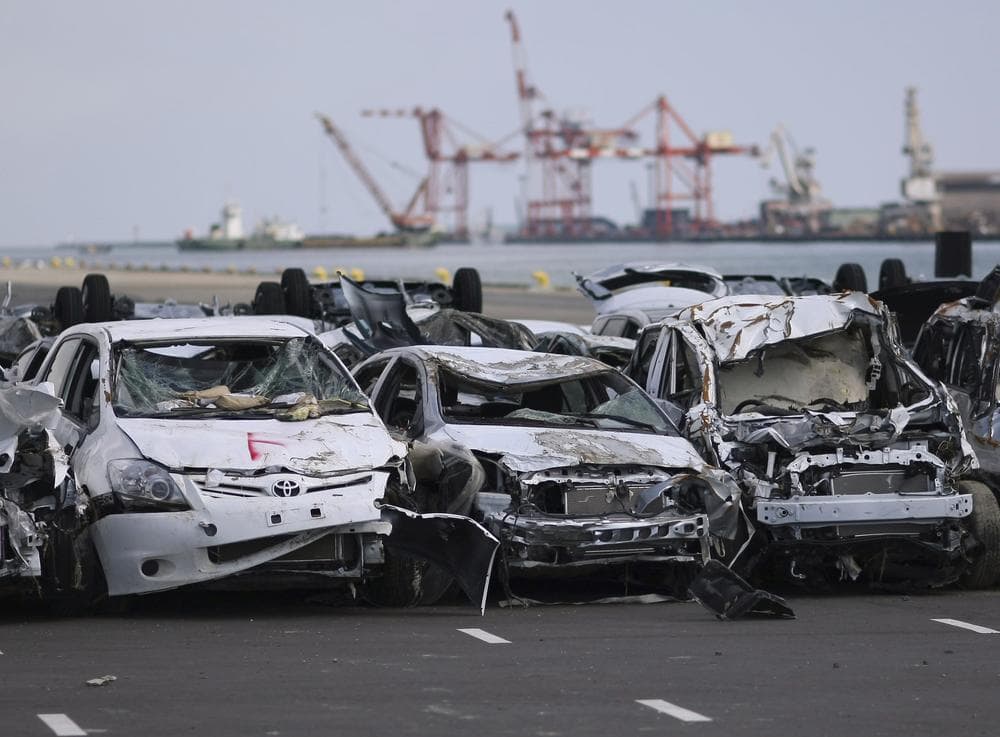Advertisement
Supply Chain Problems From Japan Affecting Cars, Electronics And More
Resume
Moody's Investors Service is considering cutting the long-term credit rating of Toyota, and it's carefully watching Honda and Nissan. All three Japanese car makers had to stop production in Japan after the earthquake and tsunami, though Toyota has managed to restart some assembly lines.
For Toyota, the disaster affected its shipping of about 500 car parts, including for cars assembled in the U.S. And it could be months before Japanese factories resume full production.
But it's not just the car industry that's affected. Most of the world's hydrogen peroxide is made in Japan. And many analysts say this is the most significant disruption they've ever seen in the supply chain for consumer electronics. Supply chain expert Jeffrey Karrenbauer, president of Insight, Inc., says it didn't have to be this way.
This segment aired on April 7, 2011.